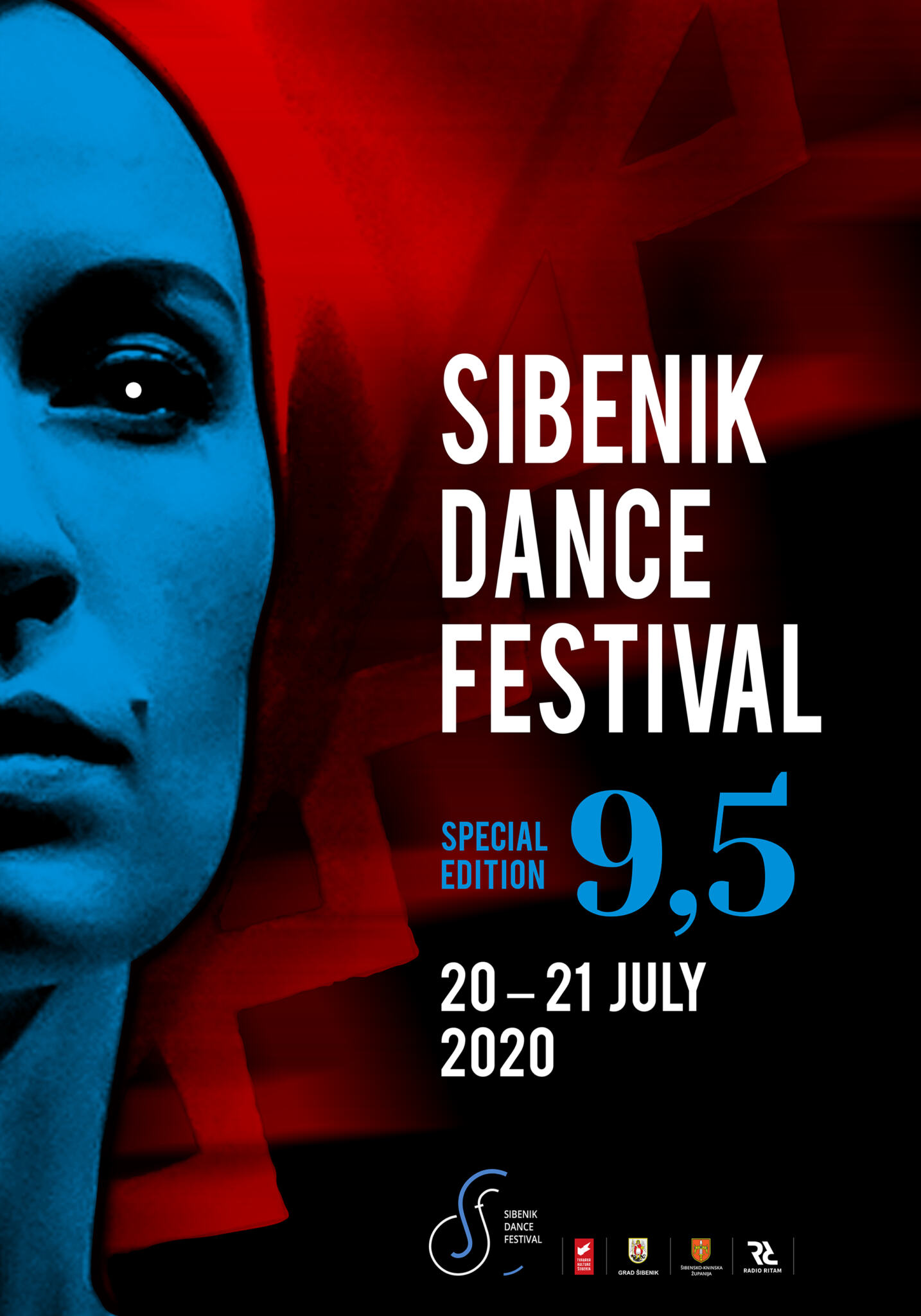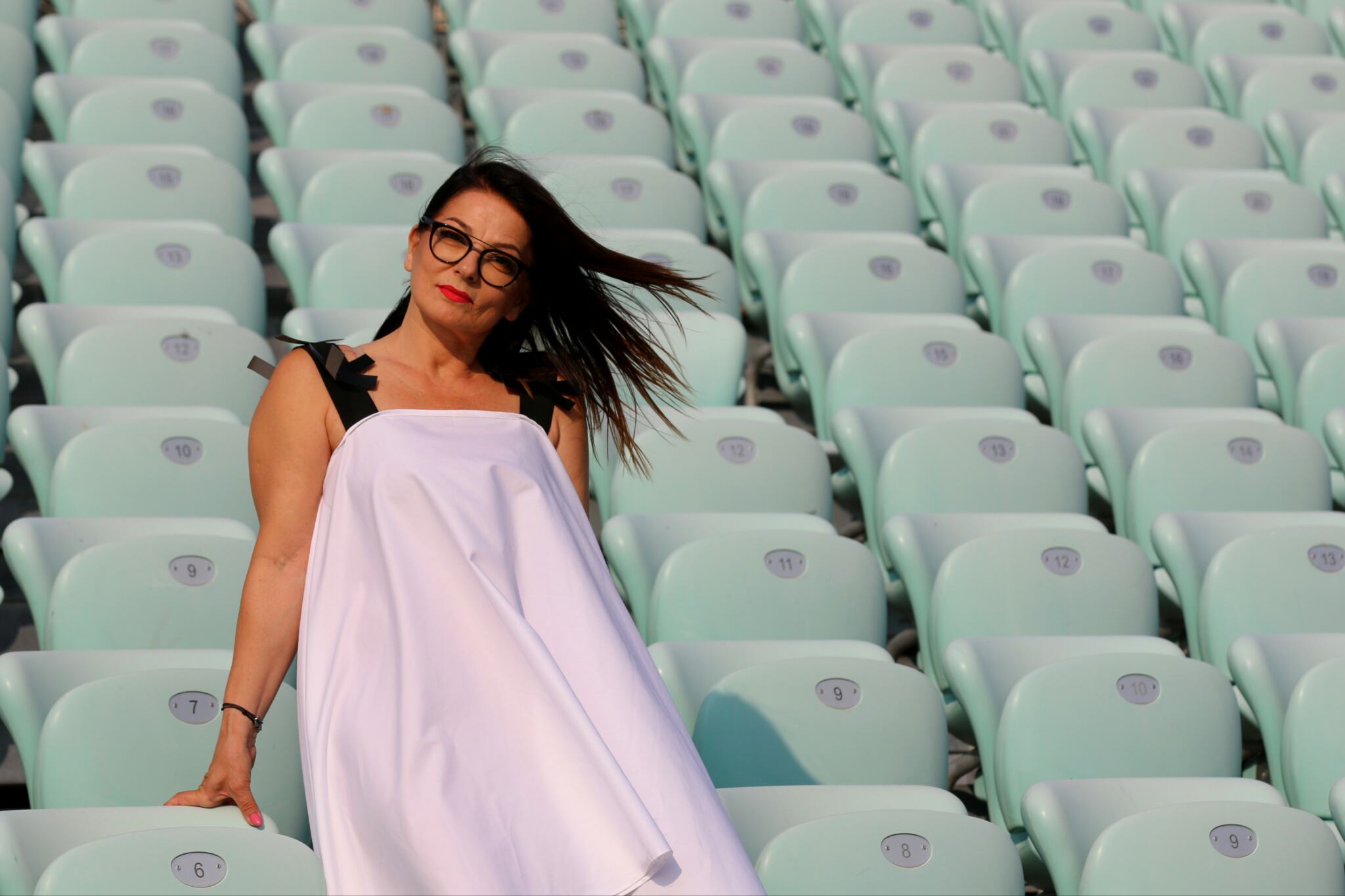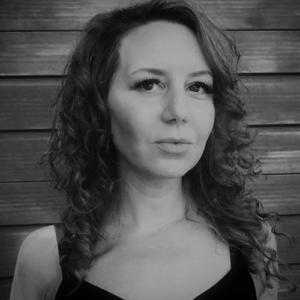
Zorana Mihelčić is a multifaceted culture entrepreneur, and is the art director of Sibenik Dance Festival. Zorana works with professional artists and young talent alike. After gaining a degree in English language and literature at Belgrade University, Serbia, Zorana studied and lived in Belgrade, spent a year in London, and then decided to move to Croatia, to her hometown Šibenik. There, she established the Shadow Dance Theatre (Croatian – Plesni Teatar Sjene) and currently resides there today.
Thank you, I am very happy to talk to you. The pandemic has certainly imposed changes into peoples lives and the economy in general. The industry of art and entertainment has suffered a huge damage on a global level.
The effects of the current situation on my private life and professional one differ. Personally, it helped me to be more introspective, and forced me to look at things from different angles. It made me focus on things important to me like my family and health, which is definitely something positive.
 From the professional point of view, these are the most challenging times ever. My passion is my work, and to feel complete again and to feel myself again, I have to be happy with what I am doing. It seems to me I will have to wait. This is all going to be over soon, and we are all going to overcome the difficulties.
From the professional point of view, these are the most challenging times ever. My passion is my work, and to feel complete again and to feel myself again, I have to be happy with what I am doing. It seems to me I will have to wait. This is all going to be over soon, and we are all going to overcome the difficulties.
For many art organisations, festivals and professionals, the crisis fell during a crucial time of the year when a substantial part of their annual income was supposed to be gained. Likewise, both of the organisations I am in charge of, Shadows Dance theatre and Šibenik Dance Festival share the same reality as many others in creative industries, meaning that a financial input from national governments would be useful.
They should explore the possibility of introducing a universal basic funding to protect art organisations from future crises and force-majeure situations, aiming at their revival and sustainability. Especially events of international significance – and Šibenik Dance Festival is one of them.
It is about time for all of us to start recognising the tremendous value of culture and the arts for the well-being of citizens, as well as their power to unite people.
I have always been a passionate admirer of the theatre and the art of dance. I grew up in Šibenik, a hometown with an international children festival. I grew up watching the plays and street performers from all around the world. I strongly believe that those memories from my early childhood influenced my choice of career.
I hardly missed a play or a performance during the festival, especially if it was a musical theatre or dance performance.
I also attended music school, played the piano and regularly went to ballet classes. That was pretty much all that life in a small town offered. But not the opportunity to build a professional career of a dancer. So I left Šibenik and went to study to Belgrade.
Those were early days for modern dance in that part of Europe. I joined Belgrade Modern Dance Company, founded by Smiljana Mandukich, a renowned Serbian choreographer and artist who laid the foundations of modern dance in Serbia and whose artistic attitude I was influenced by the most. At the time, I also worked with MIMART Dance Theatre . I was recruited by Nela Antonovich, one of the most prolific of Smiljana’s students.
My interest in the entertainment industry came later. I returned to Šibenik and realised how beautiful my hometown is and what a wonderful thing it would be to organise a festival on its fortresses and turn the medieval streets and squares into festival venues.
Šibenik Dance Festival is an international event presenting national ballets and world known companies and celebrating the beauty of dance in various forms. It is going to have the jubilee, 10th edition this year The festival stands out because of the carefully chosen programme covering all dance styles. But the thing that makes this festival special and distinguish it among the others are its venues – the old town squares and restored medieval fortresses.
I am very proud of the Art Cube Fringe, the SDF side programme presenting awarded youth companies and young emerging artists. Part of that program includes our intensive summer workshops for dance students and pre-professionals, which is conducted by dancers and dance teachers of international reputation.
Since 2001 we have worked with children and young adults teaching them modern dance techniques. We always close the season with a musical theatre performance. We also help with the promotion of young emerging artists, not necessarily dancers.
Ten years ago, with our own resources and some funding by Šibenik City Office and Šibenik Tourist Board, we started with the organisation of SDF, the international dance festival.
The tough question – I want to believe that my career highlights are yet to come!
There are lots of moments I cherish in my mind as memories for life. However, I am not sure that the TheatreArtLife readers would find them equally interesting. I might pick up a moment, though, which made me feel scared and proud at the same time. One of those moments was when I first entered the venue on newly renovated St Michael’s Fortress, climbed the top row in the auditorium and, with the amazing sea sunset and the burning horizon in the distance, I saw the world best dance dancers performing on the stage below.
I immediately knew that the festival was destined to be a success.
There were many hard times and challenges on my way. One of them is definitely the pandemic year we have just been passing through.
Like many others organisations that practice group activities, dance and movement, acting or any other kind of closed space rehearsals, we had to close our theatre during the pandemic. Consequently, we are facing financial hardship due to the COVID-19 crisis. Local community art organisations, especially those not registered as state schools, are not included in the Croatian government critical assistance funds, which makes the situation very challenging.
We are currently planning the 10th Festival Edition for 19 – 24 August 2021. The festival is working with venues and artists to plan for a range of different scenarios. At this stage and with the world health situation changing so rapidly, it’s still too early to say exactly what the festival will look like.
While the full programme and event details will not be announced until the end of May, the Festival team are planning a range of activities live and online. We know for sure that 80% our workshops and performances will take place on the open.
Public health and safety is essential, and all planning is being shaped by government advice. The festival will continue to update artists, audiences on our website, Newsletter and social networking sites.
Šibenik is a city of festivals. During summer its international festivals are a celebration of the performing arts and annual meeting point for peoples of all nations.
Šibenik Dance Festival is grateful to all our local supporters and partners. Without them, nothing would be possible. We nurture partnership with our main partner the Fortress of Culture Šibenik and its fabulous team of young creative professionals.
Joining forces we are all committed to a mission of virtuosity and originality, determined to bring the finest performers and ensembles from the worlds of dance, opera, music and theatre to this part of Europe.

Links:
Accessibility At The Smith Center Series: Part One
James “Fitz” FitzSimmons Interview: The Boys In The Band On Netflix


Michelle is a musician and composer from the UK. She has performed across the UK and Europe and is passionate about arts education and opportunities for women and girls.
Read Full Profile© 2021 TheatreArtLife. All rights reserved.

Thank you so much for reading, but you have now reached your free article limit for this month.
Our contributors are currently writing more articles for you to enjoy.
To keep reading, all you have to do is become a subscriber and then you can read unlimited articles anytime.
Your investment will help us continue to ignite connections across the globe in live entertainment and build this community for industry professionals.